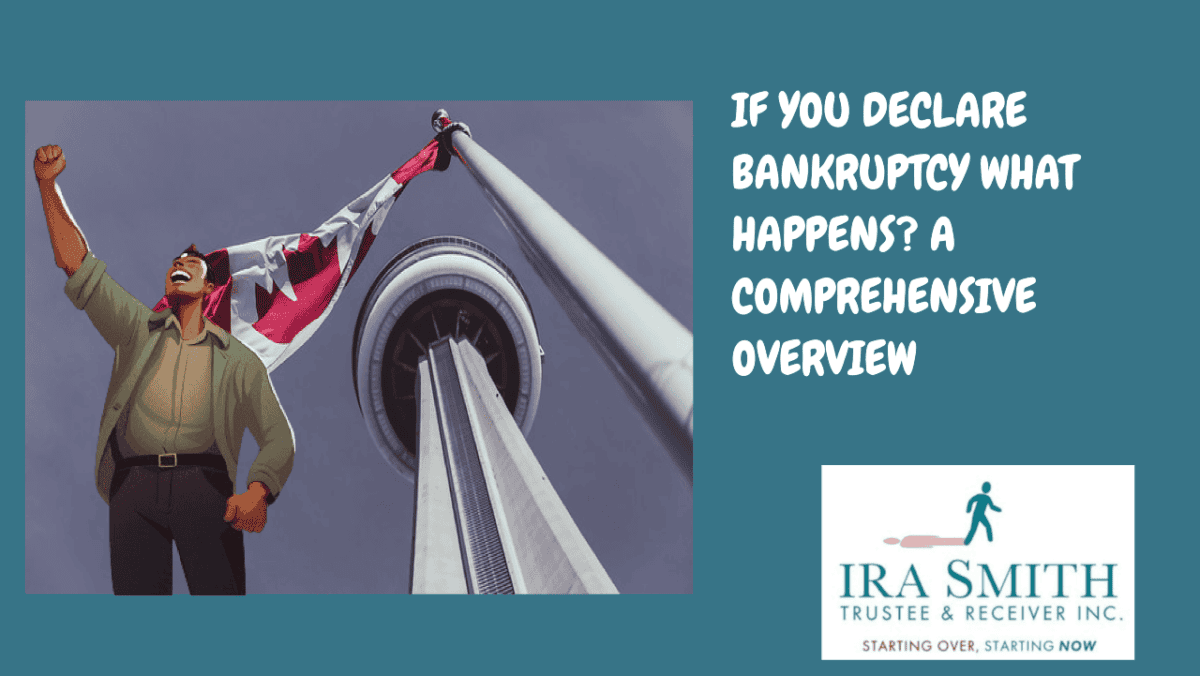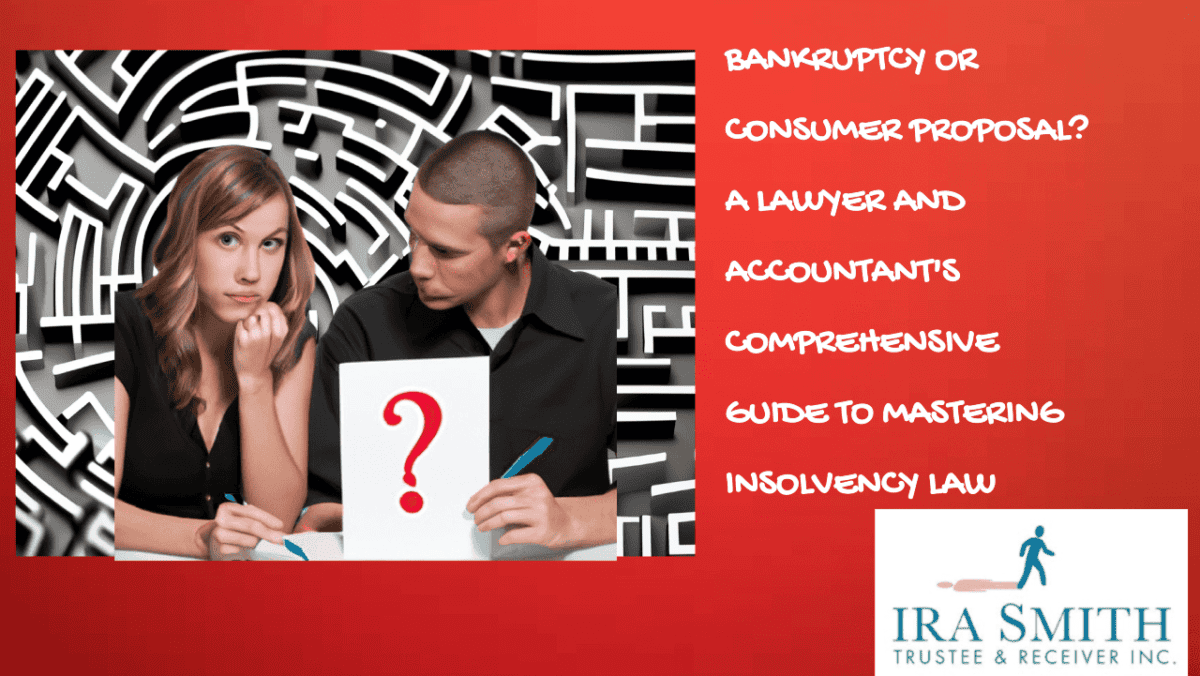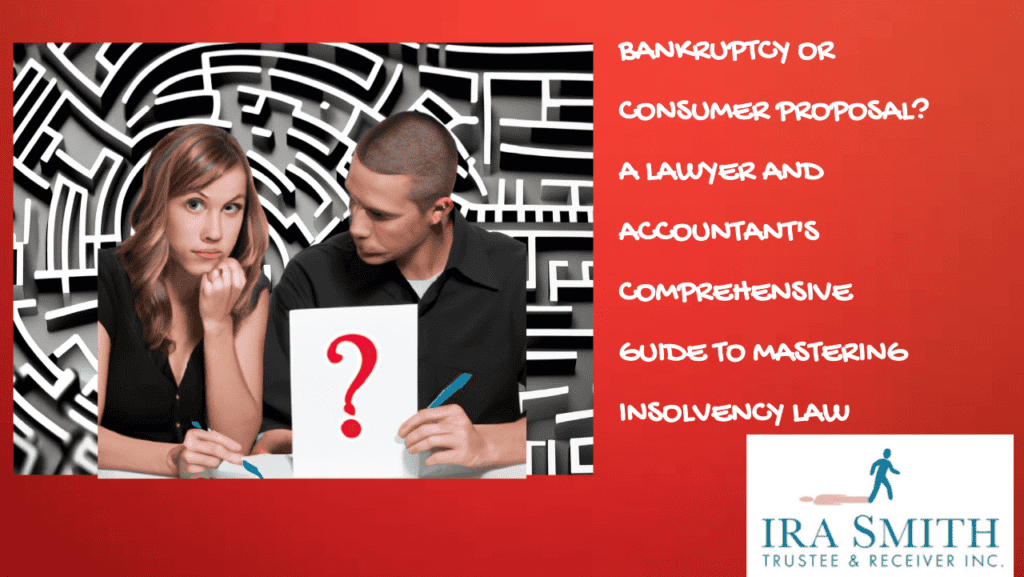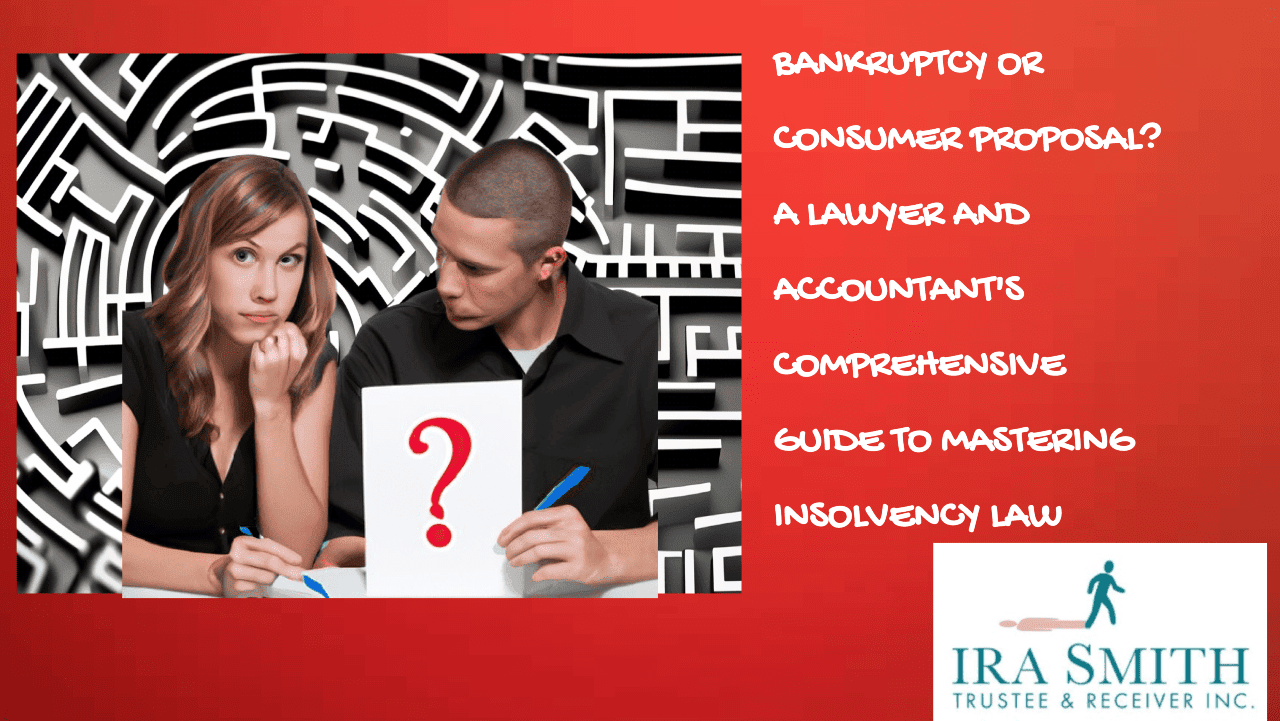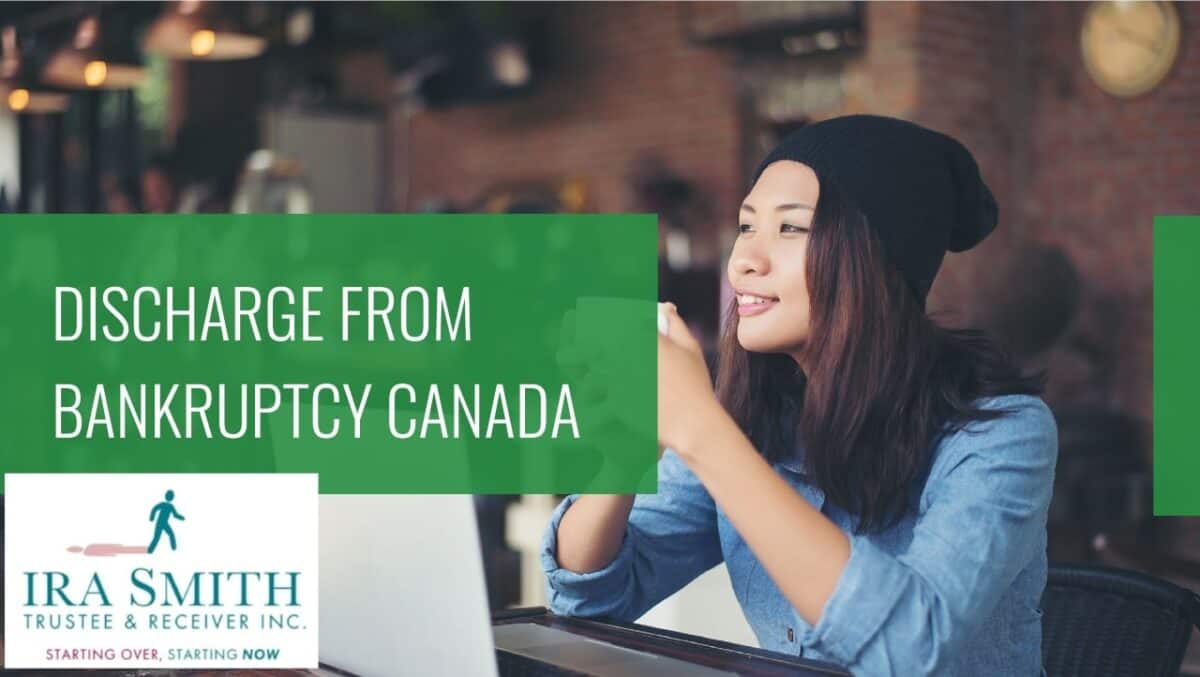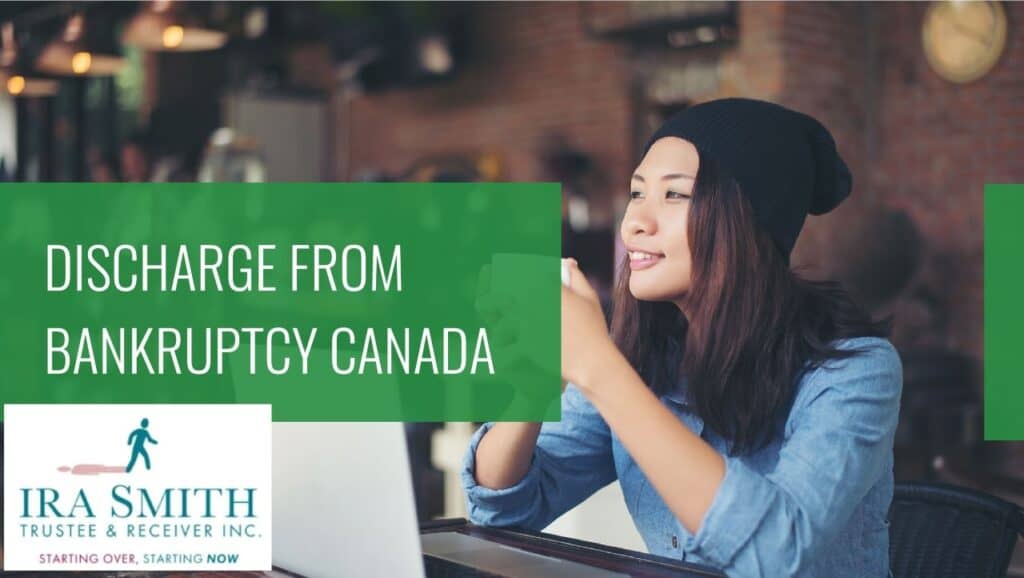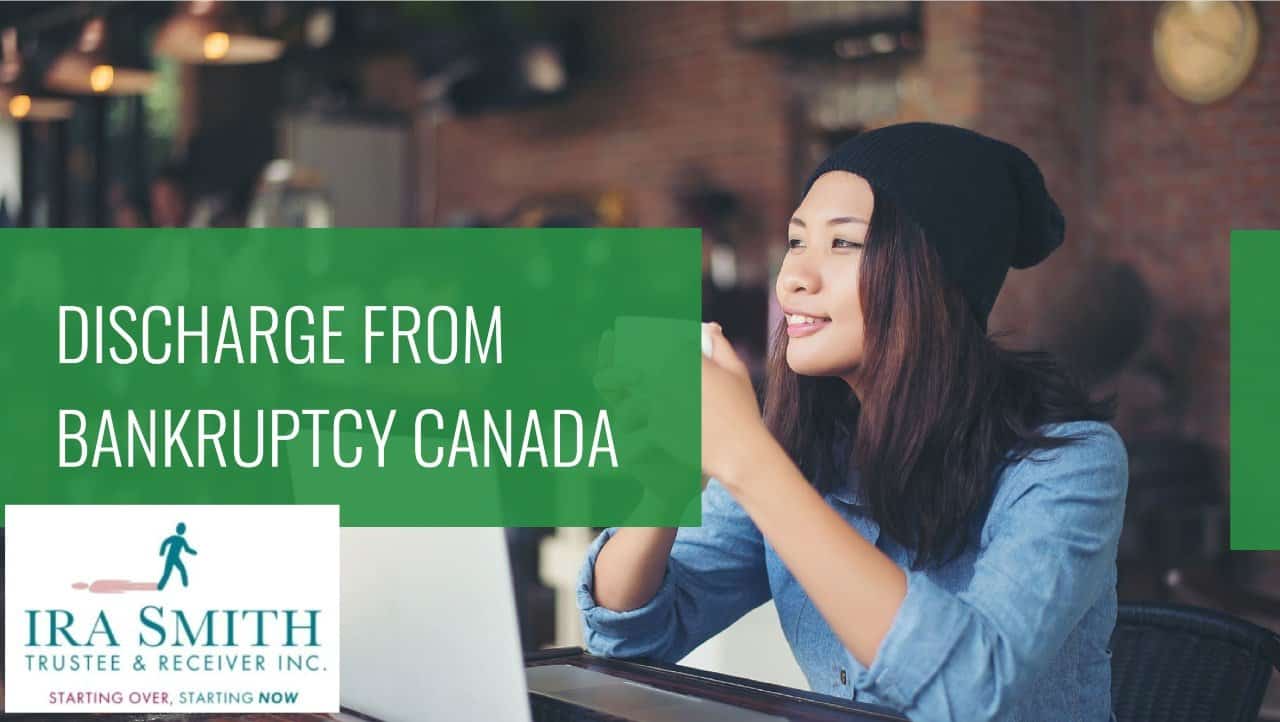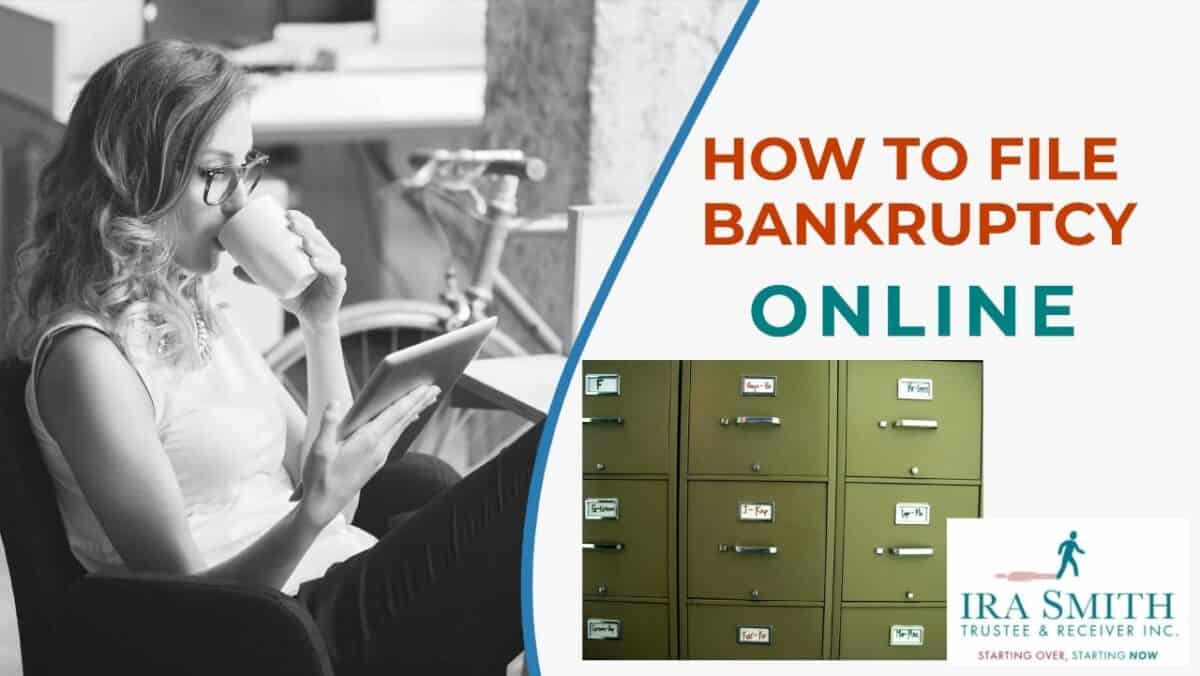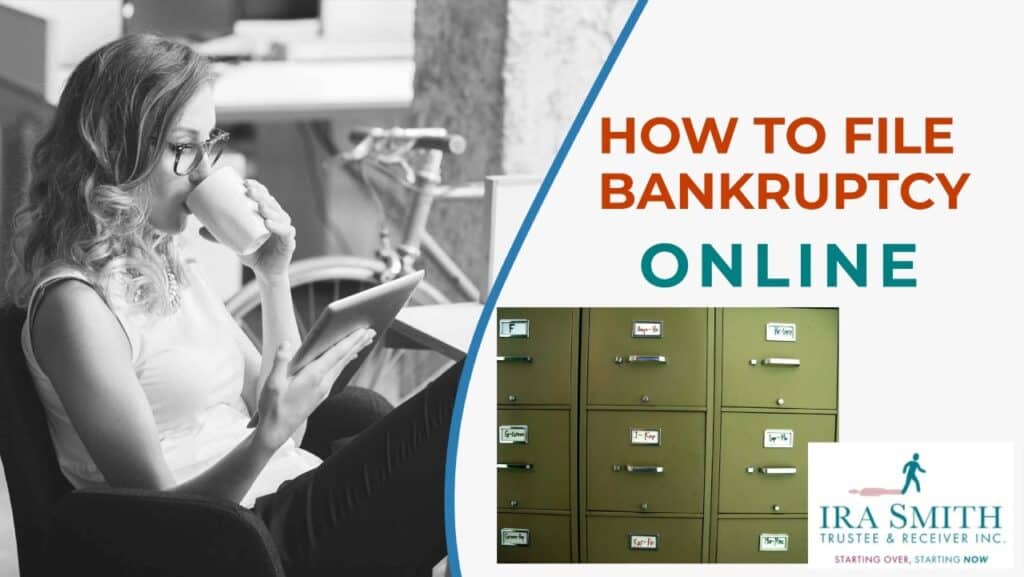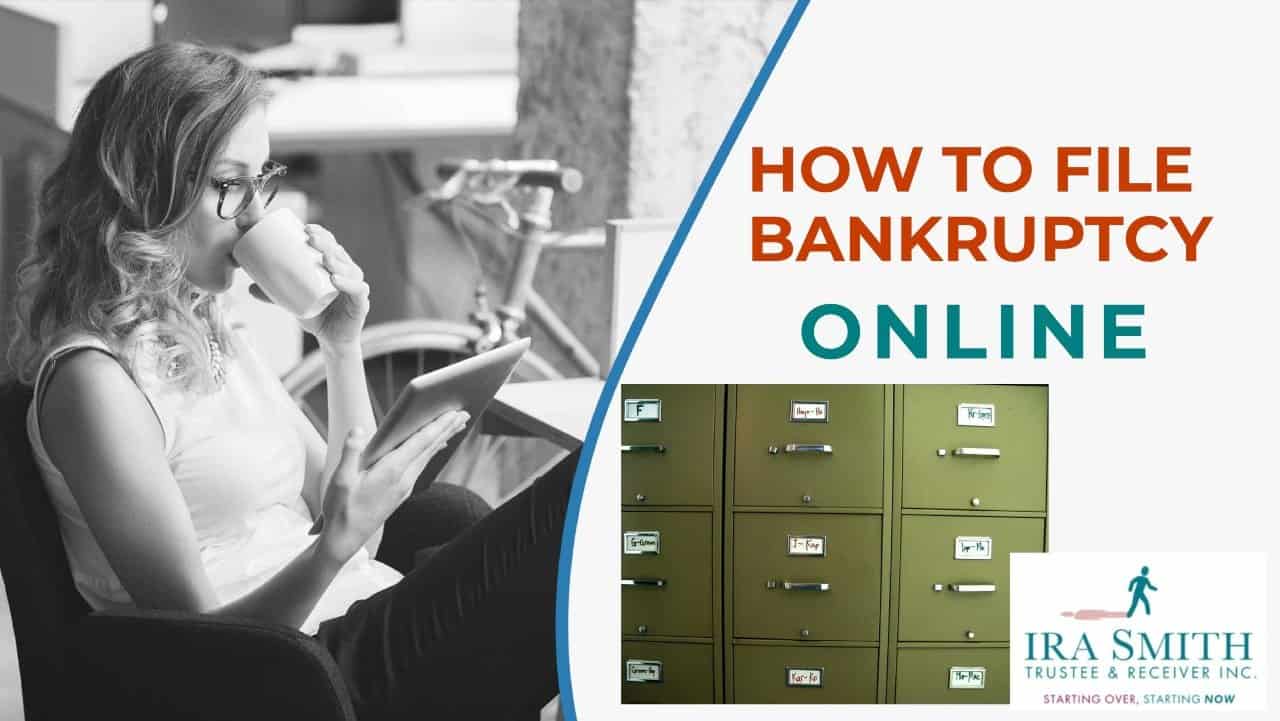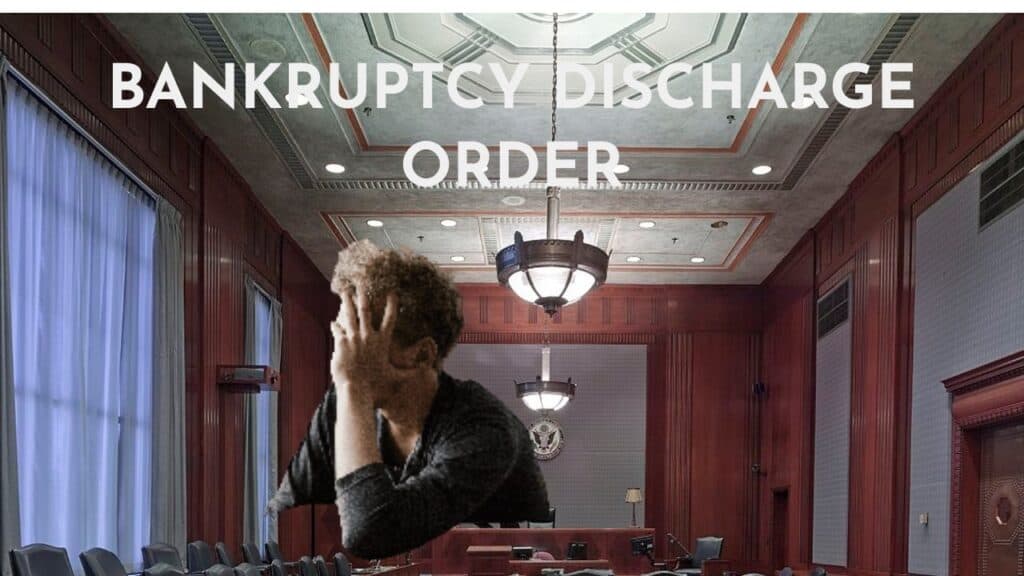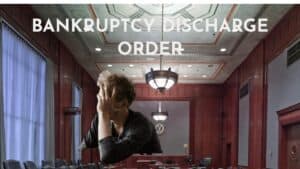If You Declare Bankruptcy What Happens? Introduction to Financial Hardships
In life, we often face unexpected challenges that test our resilience and determination. Such is the experience of people we help who have encountered financial hardships due to an unforeseen event outside of their control such as job loss. The burden of mounting debts and looming financial uncertainty weighs heavily on people, pushing them to explore solutions that would lead them toward a path of financial recovery.
That is who we help – the honest but unfortunate debtor. Dealing with financial hardships is a journey that tests our resilience and determination. It’s a path filled with unexpected twists and turns, challenging us to find the strength within ourselves to overcome the obstacles that come our way.
People with financial difficulties, particularly in the face of job loss, credit card debts, income tax debts and the contemplation of bankruptcy, learn valuable lessons about financial recovery, overcoming challenges, and the empowerment that comes from taking control of your financial future. That and if you declare bankruptcy what happens, is what this Brandon’s Blog is about.
Impact of That Unforeseen Event Outside Of Your Control On Your Financial Situation
The impact of that uncontrollable event such as losing your job goes beyond just the loss of income. It disrupts the stability we have worked so hard to build, leaving us feeling vulnerable and uncertain about the future. When someone becomes unemployed, they struggle to make ends meet, juggling bills and expenses with a limited budget. The stress and anxiety that come with financial insecurity can be overwhelming, but it’s during these challenging times that we discover our inner strength and resilience.
Struggles with Credit Card Payments and Bills
One of the most daunting aspects of financial hardships is the burden of credit card payments and bills that seem to pile up with each passing day. People find themselves caught in a cycle of debt, where the minimum payments barely make a dent in the overall balance. The constant worry about falling behind on payments and the fear of accumulating more debt can weigh heavily on our minds, affecting our peace of mind and overall well-being.
Considering Bankruptcy as a Viable Option
When individuals are confronted with substantial debt and limited solutions, the prospect of bankruptcy may arise as a challenging but potentially necessary step toward financial recovery. In my capacity as a licensed insolvency trustee (formerly known as a bankruptcy trustee), I assist individuals through a process of thorough research and consultation. My role involves guiding and comprehending the bankruptcy process, and its ramifications and exploring viable alternatives to bankruptcy. Opting for bankruptcy is a significant decision that individuals are supported in making through a careful evaluation of their financial circumstances, prospects, and personal aspirations.
Throughout the bankruptcy process, the individuals I work with gain invaluable insights into financial empowerment and the importance of seeking assistance when encountering financial challenges. While bankruptcy may lead to temporary implications on one’s credit rating, it also presents an opportunity for a fresh start and the possibility to rebuild a secure financial foundation. Engaging in the bankruptcy process fosters financial resilience and enhances individuals’ ability to navigate future financial decisions effectively.
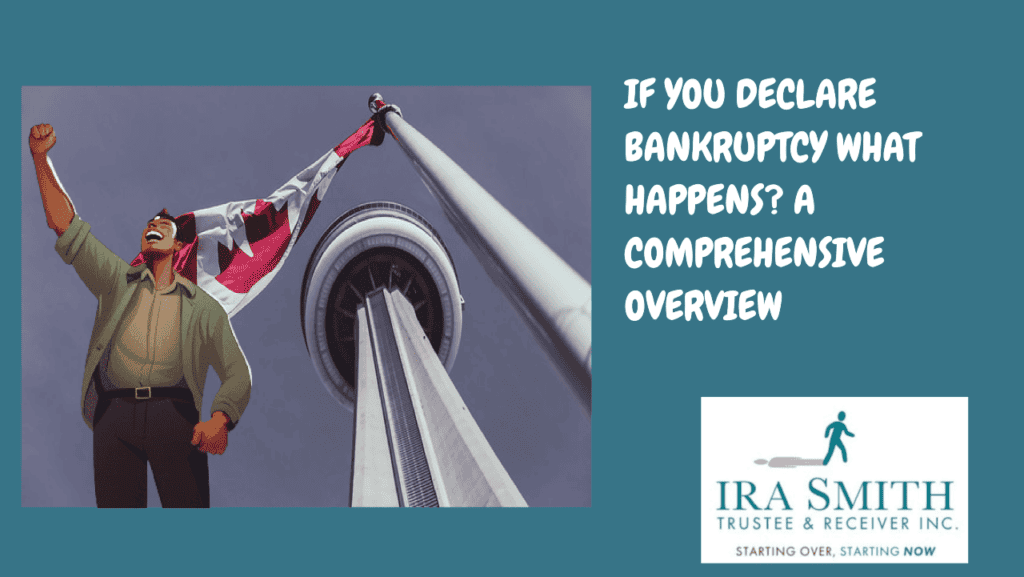
If You Declare Bankruptcy What Happens? Exploring Options: The Role of Licensed Insolvency Trustees
A journey towards financial recovery will lead you to a consultation with a licensed insolvency trustee. This no-cost initial consultation will become a guiding light offering insights and solutions to your financial challenges.
Engaging in consultations with a licensed insolvency trustee marks a crucial juncture in your financial path. Our proficiency and empathy equip debtors to comprehend the various solutions at their disposal and make well-informed choices regarding their financial destiny. By engaging in transparent and candid dialogues, you acquire the requisite insight to navigate the intricate bankruptcy process with strength and resolve.
In your journey towards your financial empowerment, the Trustee serves as a pivotal figure in facilitating the bankruptcy application process with the Office of the Superintendent of Bankruptcy Canada (OSB) and guiding you every step of the way. By taking this initial step, you are relieved of the responsibility of making direct payments to unsecured creditors and are granted a stay of proceedings, preventing creditors from initiating or pursuing collection or legal actions against you. This offers a sense of comfort and security, shielding you from additional financial pressures.
Despite the challenges you may be facing, you will find solace in knowing that certain assets may be safeguarded by provincial and federal laws, ensuring a measure of stability during this turbulent time. The Trustee’s guidance on surplus income payments, credit counselling sessions and debt repayment strategies instills a sense of discipline, confidence and commitment toward overcoming financial obstacles.
While the journey toward financial recovery may have its hurdles, the Trustee reassures you that every step taken will lead you closer to a brighter future. Though some people may have a narrow category of debts that may not be discharged, the prospect of rebuilding your financial foundation fills you with hope and optimism.
Through this experience, will learn that resilience in finance is not just about overcoming challenges but also about embracing the opportunity for growth and renewal. As you navigate through the bankruptcy process support provided by the Trustee paves the way for a new beginning filled with hope and possibilities.
If You Declare Bankruptcy What Happens? What is bankruptcy?
Definition of bankruptcy
Canadian bankruptcy is a legal process where an individual, a business or a company declares they are insolvent and are unable to meet their financial obligations. They work with a licensed insolvency trustee to legally file an assignment in bankruptcy. They do so to assign their unencumbered assets to the Trustee and get relief from their overwhelming debt load.
Laws governing bankruptcy in Canada
Navigating the intricate realm of bankruptcy in Canada is a dance choreographed by the Bankruptcy and Insolvency Act (Canada) (BIA). This piece of legislation orchestrates the delicate balance between debtors, creditors, and Trustees, each playing a unique role in the bankruptcy waltz.
When a debtor takes the courageous step of filing for bankruptcy, they are required to bear their financial soul to the Trustee, laying out their assets, liabilities, and monetary intricacies. The Trustee, like a wise conductor, then ensures a harmonious distribution of the debtor’s assets among their creditors, aiming to untangle the financial web that binds them.
For individuals, bankruptcy offers a chance at rebirth, a fresh canvas on which to paint a new financial future. However, for a company or business, it may signify the final curtain call for that legal entity. Yet, there exists a glimmer of hope in the form of selling core assets to a willing successor, potentially salvaging jobs and keeping the business flame alive.
In this intricate ballet of financial redemption, the Bankruptcy and Insolvency Act stands as the maestro, guiding the players toward a resolution that seeks to balance the scales of financial responsibility.

If You Declare Bankruptcy What Happens? Who qualifies for bankruptcy?
Criteria for qualifying for bankruptcy
In Canada, debtors facing significant debt challenges and unable to meet their financial obligations to creditors may be eligible for bankruptcy relief. To qualify for bankruptcy, debtors must have a minimum of $1,000 in unsecured debt and have been residing in Canada for at least the previous six months before filing, or have a substantial connection to the country.
Alternatives to bankruptcy – Individuals
Depending on how pressing the person’s debts are, there are several alternatives to personal bankruptcy that a licensed insolvency trustee can walk you through. The most common alternatives are:
- Credit counselling and budgeting assistance: Sometimes people just need help understanding where their family income comes from and how it is spent. In cases like this, going to a non-profit credit counselling service to get some tips and help in developing a monthly household budget and sticking to it is all that is necessary for the household to get back on track.
- Debt consolidation: If you still can borrow money at a rate lower than the amounts you are currently being charged on high-interest-rate credit cards and payday loans, you need to look at debt consolidation. Rather than having several to many high-rate debts, if you can borrow the total amount of your debt from a bank or credit union at a much lower rate than you are currently paying and use that new loan to pay off your high-interest rate debts, that will help immensely. Now you have one lower interest rate loan to repay.
- Consumer proposal: A consumer proposal is a formal filing under the BIA, however, it is not bankruptcy. It is where you make a contract with your creditors to pay less than you owe in total. It is based on your monthly income, to offer making monthly payments to the Trustee towards your debt. Normally you pay around 25% of your total debt to the Trustee. If your creditors agree, you can take up to 60 months to complete a consumer proposal. When you have finished making your payments, you get a Certificate of Full Performance and the balance of your debt is wiped away.
Alternatives to bankruptcy – Companies
- Asset sales: Are there underused or redundant assets in the company that could be sold to raise needed cash to significantly reduce or eliminate corporate debt? This should first be explored.
- Refinancing: Can the company refinance to take advantage of a loan opportunity that will help with its cash flow through lower interest, monthly payments or both? Retiring expensive debt and replacing it with more manageable debt is another avenue to explore.
- Formal restructuring – BIA Proposal: Companies that have a viable but insolvent business can look at a formal restructuring. Although it is an alternative to avoid bankruptcy, it is commonly referred to as bankruptcy protection. A proposal under the BIA is where the company can negotiate with creditors to come up with a plan to repay its debts over some timeperiod of time. Just like in a consumer proposal, the company pays less than 100% of its debt load, but upon completion, eliminates all of its unsecured debt.
- Formal restructuring – Companies’ Creditors Arrangement Act (CCAA): Companies that owe $5 million or more can also restructure as long as they have a viable business. The CCAA allows a company to restructure its debts and business operations under the supervision of a court-appointed monitor. It is essentially the same as a BIA Proposal, but just under a different Canadian statute.
- A BIA Proposal and a CCAA restructuring a similar processes you always hear under the US bankruptcy law of bankruptcy chapter 11.
If You Declare Bankruptcy What happens to your assets, debts, and income during bankruptcy?
Going through a financial crisis can be incredibly challenging, but it’s important to remember that there is always a way forward. The people we help who go through the bankruptcy process are a testament to the resilience in finance and the power of financial empowerment as they use bankruptcy to turn their lives around.
Treatment of assets in bankruptcy
One of the concerns people have when considering bankruptcy is what happens to their assets. When someone goes bankrupt, they may not have to give up all of their assets. Let me explain as follows:
Secured debts: When you have assets where there are secured loans against those assets, such as a house or a motor vehicle, the Trustee’s interest is only the bankrupt’s equity in that asset. If there is little or no equity, and your monthly budget shows that you can afford to make the monthly loan payments and you wish to keep the asset, then you can do so. The Trustee will discuss with you ways in which the Trustee can realize the bankrupt’s equity without that asset being taken away.
Exempt assets: Certain provincial and federal laws safeguard some of your possessions when you file for bankruptcy. As provincial laws vary, you need to get the complete list from a licensed insolvency trustee in the area where you live.
Non-exempt assets: Non-exempt assets refer to assets owned by a bankrupt individual that are not protected by a secured creditor’s security interest or are exempt under provincial or federal laws. These assets fall within a category that the Trustee must liquidate to benefit the creditors involved in the bankruptcy proceedings.
Treatment of debts in bankruptcy
Once the bankruptcy application is filed with the OSB, a significant burden is lifted off the bankrupt’s shoulders. Direct payments to creditors cease, and the Trustee notifies all the creditors and there is an immediate stay of proceedings.
This means that any legal actions cannot be commenced or continued against the bankrupt and all collection activities, such as wage garnishment are put on hold. This offers the person much-needed relief from the constant financial pressure.
Some debts cannot be discharged, such as alimony, child support, valid secured loans and certain types of student loans. A Trustee in your no-cost initial consultation will look at the details of your debts and advise you if any would not be discharged from your bankruptcy estate.
While the decision to make the bankruptcy filing may seem daunting, it is a necessary step toward regaining control of your finances and eliminating the stress in your life. Knowing that your wages are protected from garnishment provides a sense of security during this challenging time.
Treatment of income during bankruptcy
While in bankruptcy, the Trustee monitors the person’s monthly income and expenses. The Trustee is required by the OSB and under the BIA, to do a calculation to determine if the bankrupt person has sufficient income to contribute towards his or her total debts by making surplus income payments to the Trustee.
The Trustee is required to do this calculation both at the time of the bankruptcy filing and throughout the time the person is an undischarged bankrupt. If the person’s income changes, either up or down, this will affect the calculation.
Although judgment creditors cannot garnish wages, it is possible that until the person gets their bankruptcy discharge, they may have to contribute something from their monthly income under the surplus income calculation. A licensed insolvency trustee can explain the calculation to you.

If You Declare Bankruptcy What Happens? How long does personal bankruptcy last?
Personal bankruptcy typically lasts for 9 months for a first-time bankrupt in Canada. Your first-time bankruptcy will extend to 21 months if you have to pay surplus income. If this isn’t your first bankruptcy, it will last longer.
At the end of this time, if you have fulfilled all of your bankruptcy duties and neither the Trustee nor any creditor who has proven their bankruptcy claim opposes your discharge, then you are entitled to your bankruptcy discharge. It is at the time you receive your discharge from bankruptcy, that your debts can be discharged.
If You Declare Bankruptcy What Happens? What Are Your Duties During Bankruptcy?
Responsibilities and obligations during bankruptcy
The primary responsibilities entail the disclosure of all assets, liabilities, income, and expenses. It is required to provide bank statements and other relevant records to support the information provided. In the event of a creditors’ meeting, attendance is mandatory.
Attendance at credit counseling sessions
Participating in the two mandatory counselling sessions is an essential component of a bankrupt’s journey toward financial recovery. Each counselling session is held with a person from the Trustee’s office who the OSB has licensed as a credit counsellor.
If You Declare Bankruptcy What Happens? What Is The Impact On Your Credit Score?
Impact on credit score during and after bankruptcy
Filing for bankruptcy in Canada can have a significant impact on your credit score, both during and after the bankruptcy process. Here’s a breakdown of what you can expect:
During Bankruptcy:
- Initial Credit Score Decline: Upon filing for bankruptcy, it is common for individuals to experience a substantial decrease in their credit score, typically by 100-200 points or more. This decline is largely attributed to the fact that bankruptcy is a matter of public record, leading lenders to perceive it as a high-risk event.
- Credit Reporting: Your credit report will reflect the bankruptcy filing and remain on your report for at least 6 years from the date of discharge (more on discharge below).
- Credit Inquiries: Lenders may conduct credit inquiries to assess your creditworthiness, which can further lower your credit score.
After Bankruptcy:
- Credit Score Recovery: After bankruptcy, your credit score will gradually recover over time. The rate of recovery depends on your credit habits and the steps you take to rebuild your credit (see next discussion).
- Credit Reporting: The bankruptcy notation on your credit report will remain for roughly 6 years from the date of discharge. After that, it will be removed from your report.
- Credit Score Objectives: Strive to attain a credit score ranging between 600 and 650 within 2-3 years post-bankruptcy. This will enhance your eligibility for improved loan conditions and interest rates.
Discharge:
In Canada, bankruptcy typically lasts for 9-21 months, depending on your financial situation and the type of bankruptcy you file for (e.g., consumer proposal or personal bankruptcy). Once you’ve completed the bankruptcy process and received a discharge, the bankruptcy notation will be removed from your credit report.
Rebuilding credit after bankruptcy
Tips for Rebuilding Credit After Bankruptcy:
- Monitor your credit report: Conduct a thorough review of your credit report to verify its accuracy and pinpoint any potential areas for improvement.
- Make on-time payments: It is imperative to make payments on time for all financial obligations to showcase a commendable track record of credit responsibility.
- Keep credit utilization low: Maintain a disciplined approach to managing credit by ensuring your credit utilization remains low and refraining from excessive spending. Additionally, exercise caution when seeking new credit opportunities by minimizing credit inquiries and refraining from submitting multiple applications within a condensed timeframe.
- Avoid new credit inquiries: Limit the number of credit applications you make and try to avoid applying for multiple credit products within a short timeframe. This will help you maintain a stable credit profile and minimize the impact of new credit inquiries on your credit score.
- Credit Score Rebuilding: If you’re looking to improve your credit after facing financial challenges, some practical steps you can take include applying for a secured credit card, becoming an authorized user on a family member’s credit account, or taking out a small loan. One relatively accessible option post-bankruptcy is getting an RRSP loan, where the RRSP is held at the same financial institution you’re borrowing from.
These kinds of loans must normally be repaid within 1 year. Making all loan payments on time and doing the same thing again the following year not only will rebuild your credit, but also build your savings.

If You Declare Bankruptcy What Happens? What are the consequences for your spouse’s credit and assets?
Spouse’s liability for joint debts
In Canada, when one spouse files for bankruptcy, sometimes it can have consequences for the other spouse’s credit and assets, depending on the type of bankruptcy and the couple’s financial situation. Here’s a breakdown of the most common issues.
- Credit Score Impact: The non-bankrupt spouse’s credit score could be affected if they are jointly liable for certain debts with the bankrupt spouse. This is because it may view the non-bankrupt spouse as being the next to default.
- Joint Debts: If the couple has joint debts, such as a mortgage, car loan, or credit card, the non-bankrupt spouse will still be responsible for paying those debts. This is because joint debts are considered a shared responsibility.
- Assets at Risk: Any of the non-bankrupt spouse’s assets that are jointly owned with the bankrupt spouse, will be at some level of risk. For example, if the couple owns a jointly held property, the Trustee must recover the non-exempt equity of the bankrupt spouse’s assets. In jointly held property, this will on a practical level impact and involve the non-bankrupt spouse, who is the natural purchaser of the bankrupt spouse’s equity.
- Credit Reporting: The non-debtor spouse’s credit report may reflect the bankruptcy filing depending on the type of bankruptcy, the credit reporting agency and any joint debts or debts guaranteed by the non-bankrupt spouse.
Types of Bankruptcy and Their Impact on the Non-Debtor Spouse
Consumer Proposal: A consumer proposal is a debt settlement agreement between the insolvent spouse and their creditors. In this case, the non-insolvent spouse is not directly affected by the consumer proposal filing, but they may still be responsible for paying joint debts.
Personal Bankruptcy: Personal bankruptcy is a more severe type of bankruptcy that involves the liquidation of assets to pay off debts. In this case, the non-insolvent spouse’s assets may be at risk if they are jointly owned by the bankrupt spouse.
Protection of spouse’s assets during bankruptcy
The time to put plans in place to protect the assets of each spouse is upon the acquisition of each asset when neither spouse is insolvent. Any transfers of assets aiming to shield them from creditors, will not be successful. Here are some tips:
Separate Property: If the non-insolvent spouse has separate property, such as a separate bank account or a separate property, it is generally protected from the bankrupt spouse’s creditors.
Exemptions: In Ontario, individuals going through bankruptcy can keep certain assets as exempt property. These include household furnishings and appliances valued up to $14,180, livestock, tools, and other items used in farming up to $31,379 for farmers, tools of trade up to $14,405 for self-employed individuals, one motor vehicle worth up to $7,117, equity in a primary residence not exceeding $10,783, and funds in registered plans like RRSPs, RRIFs (other than contributions in the 12 months preceding the bankruptcy), and life insurance policies with designated beneficiaries such as a parent, spouse or child.
Credit Counseling: Additionally, credit counselling might be a good idea for the non-bankrupt spouse.
If You Declare Bankruptcy What Happens After You Are Discharged From Bankruptcy?
Discharge from bankruptcy
The effects of an absolute discharge from personal bankruptcy for the person are substantial. As soon as an outright discharge is granted, the debtor is no longer accountable for any type of unsecured debts that existed at the date of bankruptcy (with a few specific exceptions). The debtor is launched from needing to pay back debts that they took on before applying for bankruptcy.
This indicates that the debtor no longer has to stress over paying back those financial debts and can move on with their life. This supplies a clean slate for the borrower and helps them return to their feet.
There are different types of bankruptcy discharges. The one every bankrupt person wants is an absolute discharge. However, sometimes there is a reason for either a creditor, the licensed insolvency trustee (formerly called a trustee in bankruptcy), or both, to oppose a bankrupt person’s discharge. When this happens, there must be a court hearing to determine what form of discharge the bankrupt is entitled to.
The purpose of the discharge hearing is for the court to view the evidence put forward by those opposing an absolute discharge, the bankrupt who believes they are entitled to one and to review the Trustee’s report and gain further information about the conduct of the bankrupt person, both before and during bankruptcy, and to hear about the administration of the bankruptcy.
At the discharge hearing, the court is attempting to balance the right of a bankrupt person to receive a discharge and the rights of the creditors to be paid. The court will also be concerned that the administration of the bankruptcy is not only fair to all parties but is also seen to be fair. I recently came across a decision of the Court of King’s Bench of Alberta which exemplifies this finding of balance.
Suspension of discharge from bankruptcy: When can a bankrupt person be discharged? If you have filed for bankruptcy for the first time, you may qualify for an automatic discharge after a 9-month bankruptcy period. To qualify for this automatic discharge, you must have:
- attended the two mandatory financial counselling sessions with the Trustee;
- no requirement to pay surplus income, being a portion of their income is paid to the bankruptcy estate
- according to guidelines set by the OSB or Official Receiver); and no opposition to his or her discharge. The only party that can authorize an
- automatic discharge
- in bankruptcy is the Trustee.
If you have made an assignment in bankruptcy before and so this subsequent bankruptcy is your 2nd bankruptcy, you will need to wait at least 24 months before you can receive a discharge. If you have a surplus income payment requirement, your bankruptcy will be prolonged to 36 months.
If you have filed for bankruptcy twice before, you can expect the timeline for a third bankruptcy to be the same as your 2nd. However, the Trustee or creditors may be more resistant to your discharge this time. The court may extend the timeline if it deems necessary.
Rehabilitation and rebuilding finances after bankruptcy – A Path to Financial Freedom
Rehab after personal bankruptcy entails a combination of finance management, debt administration, and as indicated above, credit rebuilding. The goal is to produce a sustainable economic strategy that permits you to manage your debt, reconstruct your credit, and achieve lasting financial security.
The key steps to rehabilitation are:
- Get your bankruptcy discharge: Attend the two mandatory financial counselling sessions with your licensed insolvency trustee firm, fulfill all your other duties in the bankruptcy administration and obtain your discharge from bankruptcy
- Create a Budget: Continue tracking your income and expenses to identify areas where you can cut back and allocate funds more effectively. A budget will help you prioritize your spending and make informed financial decisions.
- Prioritize Debt Repayment: Focus on starting within your budget spending so that you can pay your bills every month on time in full.
- Rebuild Credit: Use the tips I listed above to rebuild your credit.
- Screen Credit Reports: Obtain a duplicate of your credit report and correct any type of mistakes or errors to guarantee your credit score is accurate.
- Seek Professional Guidance: If you feel you need an element of accountability to help you in your rehabilitation, seek out a non-profit credit counsellor or financial coach to give you personalized guidance and support to help you navigate the rehabilitation process and achieve your financial goals.
Rehabilitation after bankruptcy can have numerous benefits, including:
- Improved credit scores
- Reduced debt burden
- Increased financial stability
- Greater financial flexibility
- A fresh start
If You Declare Bankruptcy What Happens? Looking Towards a Brighter Future Conclusion
The people we help through personal bankruptcy for their journey of financial recovery are filled with a sense of gratitude and hope. The impact of understanding their credit rating, navigating the bankruptcy process, and embracing the steps toward recovery are profound. It not only tests their resilience in finance but also empowers them to envision a brighter future filled with possibilities through a fresh start.
I hope you enjoyed this if you declare bankruptcy what happens Brandon’s Blog. Do you or your company have too much debt? Are you or your company in need of financial restructuring? The financial restructuring process is complex. The Ira Smith Team understands how to do a complex restructuring. However, more importantly, we understand the needs of the entrepreneur or someone with too much personal debt.
You are worried because you are facing significant financial challenges. It is not your fault that you are in this situation. You have been only shown the old ways that do not work anymore. The Ira Smith Team uses new modern ways to get you out of your debt troubles while avoiding bankruptcy. We can get you debt relief freedom.
The stress placed upon you is huge. We understand your pain points. We look at your entire situation and devise a strategy that is as unique as you and your problems; financial and emotional. The way we take the load off of your shoulders and devise a plan, we know that we can help you.
We know that people facing financial problems need a realistic lifeline. There is no “one solution fits all” approach with the Ira Smith Team.
That is why we can develop a restructuring process as unique as the financial problems and pain you are facing. If any of this sounds familiar to you and you are serious about finding a solution, contact the Ira Smith Trustee & Receiver Inc. team today.
Call us now for a free consultation. We will get you or your company back on the road to healthy stress-free operations and recover from the pain points in your life, Starting Over, Starting Now.
The information provided in this Brandon’s Blog is intended for educational purposes only. It is not intended to constitute legal, financial, or professional advice. Readers are encouraged to seek professional advice regarding their specific situations. The content of this Brandon’s Blog should not be relied upon as a substitute for professional guidance or consultation. The author, Ira Smith Trustee & Receiver Inc. as well as any contributors to this Brandon’s Blog, do not assume any liability for any loss or damage resulting from reliance on the information provided herein.


